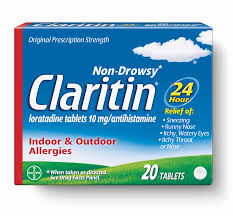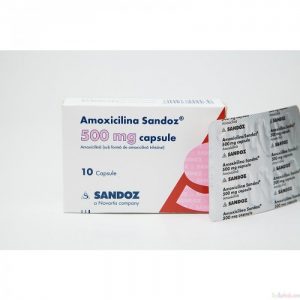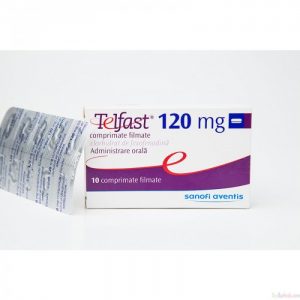Description
What is Ciprinol?
Ciprinol is an antibiotic in a group of drugs called fluoroquinolones (flor-o-KWIN-o-lones). Ciprinol fights bacteria in the body.
Ciprinol is used to treat different types of bacterial infections. It is also used to treat people who have been exposed to anthrax.
Important information
You should not use this medication if you are also taking tizanidine.
You may not be able to use Ciprinol if you have a muscle disorder. Tell your doctor if you have a history of myasthenia gravis.
Ciprinol may cause swelling or tearing of a tendon (the fiber that connects bones to muscles in the body), especially in the Achilles’ tendon of the heel. This effect may be more likely to occur if you are over 60, if you take steroid medication, or if you have had a kidney, heart, or lung transplant. BUY CIPRINOL 250 MG online
Stop taking this medicine and call your doctor at once if you have sudden pain, swelling, bruising, tenderness, stiffness, or movement problems in any of your joints. Rest the joint until you receive medical care or instructions.
Before taking this medicine
You should not use this medication if you are allergic to Ciprinol, or if:
- you are also taking tizanidine; or
- you are allergic to other fluoroquinolones (gemifloxacin, levofloxacin, moxifloxacin, ofloxacin, norfloxacin, and others).
You may not be able to use Ciprinol if you have a muscle disorder. Tell your doctor if you have a history of myasthenia gravis.
To make sure Ciprinol is safe for you, tell your doctor if you have:
- a heart rhythm disorder, especially if you take medication to treat it;
- a personal or family history of Long QT syndrome;
- tendon problems, arthritis or other joint problems (especially in children);
- a muscle or nerve disorder;
- trouble swallowing pills;
- liver disease;
- kidney disease (or if you are on dialysis);
- seizures or epilepsy;
- a history of head injury or brain tumor;
- diabetes (especially if you take oral diabetes medication);
- low levels of potassium in your blood (hypokalemia);
- if you use a blood thinner (warfarin, Coumadin) and have “INR” or prothrombin time tests.
Ciprinol may cause swelling or tearing of a tendon (the fiber that connects bones to muscles in the body), especially in the Achilles’ tendon of the heel. This can happen during treatment or up to several months after you stop taking Ciprinol. Tendon problems may be more likely to occur if you are over 60, if you take steroid medication, or if you have had a kidney, heart, or lung transplant.
FDA pregnancy category C. It is not known whether Ciprinol will harm an unborn baby. Tell your doctor if you are pregnant or plan to become pregnant while using this medication.
Ciprinol can pass into breast milk and may harm a nursing baby. You should not breast-feed while using this medicine.
Ciprinol
Ciprinol is a medication that is used to treat certain kinds of bacterial infections. It is also to prevent or treat anthrax. Anthrax is a severe infection that is known to spread because of a bioterrorist attack. Ciprinol is also used to treat specific kinds of urinary tract infections by the use of tablets which are extended release. This medication is in a category of medications known as fluoroquinolones that work by destroying bacteria which can lead to infections. Ciprinol will not work with viral infections such as the cold or flu.
Ciprinol is dispensed as a tablet, liquid or extended release tablet. Both the tablet and the liquid can be take with food or with no food and are normally prescribed to be taken in the morning and at night. With the extended release tablets, they are prescribed to be taken only once a day, usually at night, with or without food.
It is important that you take Ciprinol at the same time each day. How long you are taking the medication will completely depend on what type of infection you are trying to get rid of. You will need to be sure that you take the medication exactly as directed and that you do not take more or less than what has been prescribed to you.
It is important that you do not take this medication with any dairy products or juices that are calcium fortified. You can take Ciprinol with food or drinks that contain dairy products or calcium-fortified juices but you cannot take them alone with either of these.
It is not recommended that you crush, chew or cut the pills but instead that they be taken as a whole. It is important that you let your doctor know if you have trouble swallowing pills.
If you are taking the liquid form, be sure that the bottle is well shaken before you take the medication so it is evenly mixed.
You will most likely begin to feel better after a few days of taking Ciprinol but it is important that you do not stop taking the medication even after you start feeling better. The medication needs to be taken as directed by your doctor and completely taken according to the label directions. If you stop taking Ciprinol after a few days or before the course of treatment has ended, your infection may not fully be gone and may return again.
Some of the side effects of Ciprinol may be common while others may be more severe. If you experience the more common side effects such as nausea, vomiting, pain in the stomach area, heartburn, diarrhea, headache, vaginal discharge or urge to urinate, these will go away over time and should not become severe. If they do not go away or become severe, contact your doctor right away. BUY CIPRINOL 250 MG online





Reviews
There are no reviews yet.